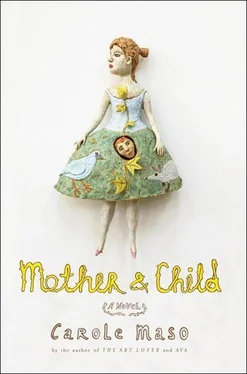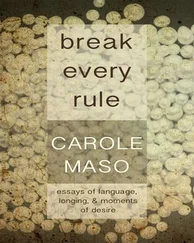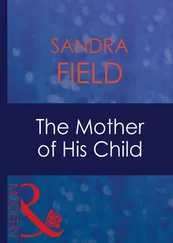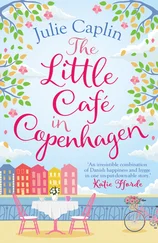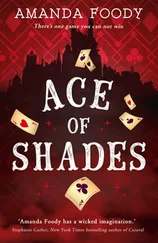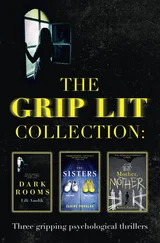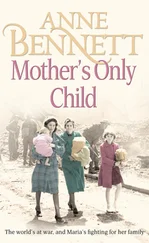One side is far too hot to be inhabited, and the other side is far, far too cold. Still — and the mother looks out into the slip of space the little lamb disappeared into — there remains a slender crescent where the two hemispheres overlap, and where these hemispheres overlap, there is hope. There is a small space called the Glisten Zone, the mother says, where something or someone may still live.
The mother is a beautiful star, hot to the touch, radiant beyond belief. When the child turns away, she is draped in darkness, and when she turns back, she catches fire. The child is burning. Freezing and then burning, and then only burning — caught in the incineration — until she is a ghost, a specter, and her hope falters. The specter chatters and babbles in her sleep. She does not rest. She finds and then loses, finds and then loses that thin sliver. Where is her lamb?

THEY COME SWIFTLY from the ends of the earth. None of them grow tired. None of them stumble. They never doze or sleep. Not a belt is loose; not a sandal strap is broken. Their arrows are sharp, and their bows are ready to shoot. Their horses’ hoofs are as hard as flint, and their chariot wheels turn like a whirlwind. They are looking for her lamb. There is nothing they will not do for the child.

ANOTHER MOTHER, CLEARLY a more mindful mother, had an arsenal of identical monkeys exactly like her son’s beloved monkey Zippy. They were hidden away in the event that the real Zippy disappeared. The more mindful mother had a stack of extra Zippys in her bedroom closet, and one day while her son was playing Hide and Seek, he came upon them — an improbable pile of monkeys in the closet.
What on earth are these? the boy asked, horrified. These are the other Zippys, his mindful mother responded calmly, upon which the boy began shaking his head back and forth, back and forth, back and forth with great consternation.
This is the good Zippy, he said most emphatically, and these— these, these, these are the no-good Zippys, and straightaway he was gone. After a few hours the boy emerged again, having built a house of cardboard for the no-good Zippys, and he dumped the monkeys inside and he made a sign for the door that said, Home of the No-Good Zippys. Such was the story the more mindful mother told the less mindful mother when she heard of the lambless child.
Regardless of the reception of the no-good Zippys, the mother wishes she was a mother like that one, a more mindful one, and that she had a roomful of good or no-good Lambys in a quiet pile by her side.
The more mindful mother got the less mindful mother to thinking of Other Mothers and Mother Substitutes and As-If Mothers, ones who might guide the child through fraught terrain. An As-If Mother would come in handy too, in the event something ever happened to this one.
That night she dreamt of a cupboard full of Lambys, but the next morning when she went to the cupboard, the cupboard was bare.

IN A ROOMFUL of extra Lambys, she might, after the child was asleep, toss them into the air and watch them: their white bellies skim the ceiling and billow and then fall. This would give the mother a happy feeling. She might love the extra Lambys in the night and play with them, in preparation for the day when the real Lamby returned.
She wanted the child to know that Infinite Grace was available to them. It was only a matter of being open and ready to receive.

SO MANY THINGS were going on in the backyard. The children were following the squirrels with notepads, noting where they hid their nuts, real and otherwise, for the winter. Hiding nonexistent nuts was nothing new to the squirrels. They did this routinely to protect their food from thieves, but when the squirrels saw the children with notebooks, their fake burials increased. Squirrels are smarter than they look and understand a marauding child very well, thank you. Squirrels understand the intention to steal. This suggests a Theory of Squirrel Mind, the eighth graders noted.
Next door, cameras were being put onto the heads of sleeping deer. Everyone wants to see what a deer sees and where they go when they go away. Had she known this before, the child might have put a little device like that on Lamby’s head.
Down the road, little location devices, very tiny, were being placed on the heads of anesthetized crows to show where crows go. Everyone loves a bird’s-eye view from time to time.

IN TRYING TO think about where Lamby went, an exhaustive application of logic to all available possibilities should be employed. One must follow every thread. Trace every step, inch by inch, point by point; blindly exhaust the search space completely. Such a process is known as Ariadne’s Thread. It permits backtracking, reversing early decisions, and trying alternatives. Yes, the mother thinks, all quite sensible, but we have little interest in the truth if the truth will lead us in a disheartening direction — all we want is Lamby back.

THE MOTHER AND child walk through the sacrificial world. There appeared a mark of rabbit blood at the door. The mother places her hand over the mark, and the blood shines through. A great price will be exacted and a small reward will be doled out in return. Who looks down on them? the mother wonders. They step over the threshold of blood where the cat’s catch of the day lies splayed and faceless.
Some cultures believe that stepping over a threshold of blood brings lifelong luck; others believe the luck is in a swarm of bees or in a vanishing lamb.

THE MOTHER HAD been under an inordinate amount of stress, and it made the Leprosy appear. Actually it was not Leprosy, it was something called Shackles, but it covered her face and head and she looked like a Leper, as the Risen-Again Children duly noted, and her suffering was extreme. The doctor said she might go blind, or she might go deaf from the Leprosy that had come from too much stress. After the pain subsided somewhat, the mother began to resume her life, and she could hear, and she was not blind. And though she still had a bloated, swollen monster head, there was the matter of back-to-school shopping to do.
The mother and the child went to the shoe section of the large department store and sat in the children’s section and waited for someone to help them. When the stack of boxes tall as a skyscraper came toppling down, the mother started to cry. Probably the mother was just tired. She put her terrible head in her hands, and when she looked up, there was a small coven of children pointing at her, gasping and then running away.
As news spread throughout the first floor of the department store, more and more children came to do their gawking. It was always the same: her head in her hands, then her head up. When her head went up and she looked right at them, they would run away, screaming with glee. Head down, head up, gasp and run away, gasp and run away.
The child, however, did not notice. She was oblivious to the commotion and remained deep within her shoe trance.
The child, as any child psychologist will tell you, cannot, no matter what, afford to see her mother as a monster. The disintegration of the core narrative is at stake, the psychologists might say. The mother smiles from inside her crusty head and helps the child with every buckle and every lace, buckle after buckle, lace after lace, shoe after shoe.
Читать дальше
